Fokker. Man and plane. Part one
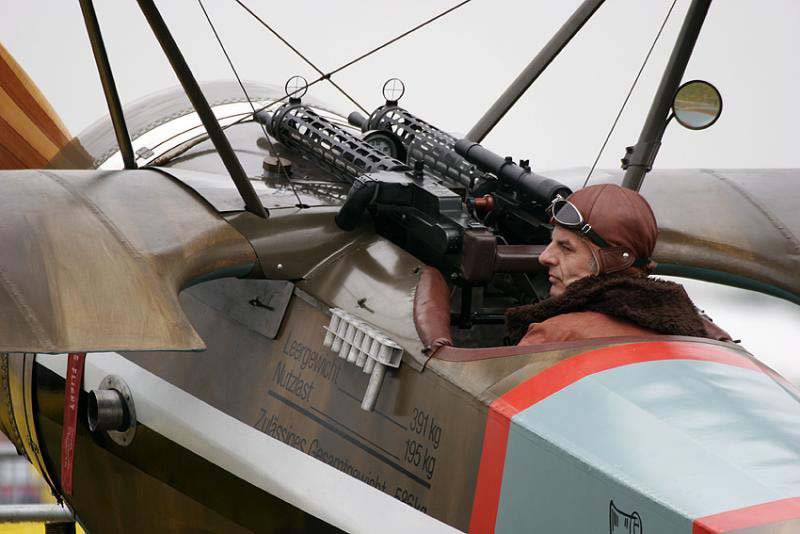
At the beginning of the 20 of the last century, our country bought about a thousand military and civil aircraft abroad. There were two goals: to quickly update the country's air fleet, destroyed by the world and civil wars, and to master the experience of aircraft construction in the world. Airplanes were bought in different countries, different brands, one by one, in several copies, in a dozen or so. A lot of cars (about three hundred) bought from Professor Junkers in Germany; his company was at that time the most advanced, even had a concession in Moscow. But, despite this, most of the aircraft (almost five hundred, that is, almost half of all purchased) were purchased from the Dutch designer and entrepreneur Anthony Fokker. Machines are simple, reliable and relatively cheap.
A certain role in the trade relations of Fokker with the USSR was also played by the fact that Anthony had visited the competition of military airplanes in St. Petersburg in 1912 year. He admired the vehicles he saw, and at the same time the young pilot Ya. A. Galanchikova. With the unstoppable energy that Anthony possessed in those years, he introduced the “Russian spirit” into the designs of his planes. The main features were: welded frame and plywood wing trim. Plywood sheathing, applied instead of fabric coating, made the wing smooth, well-kept shape and light, because it took on some of the bending and twisting load. (By the way, it is little known that in Russia, plywood was invented - in the year 1887 by O. S. Kostovich.)
Fokker airplanes faithfully served us for more than ten years both in the Air Force and on passenger lines. And after another ten years were firmly forgotten. Anthony Fokker himself was forgotten, despite his contribution to the domestic and world Aviation. In addition, it would not be an exaggeration to say that his life and fate were very unusual, and if he were an American, Hollywood would have shot a couple of films about him. Let's try to remove the curtain of the information vacuum from the outstanding personality of a talented aircraft designer. And start from the beginning.
In 1909, the Dutch rich man G. Fokker, who made a huge fortune on coffee plantations in Java (it was there that Antoni Fokker was born), almost forcefully sent his nineteen-year-old son Antony to the German city of Bingen, where, according to the colorful avenue, there was the best in Germany, the school of automotive engineers. However, this school was a provincial workshop. Anthony waved his hand at her and went to travel around Germany. Not far from Mainz, he came across a school of drivers, for whom a certain Buchner, posing as a seasoned aviator, undertook to build and fly around an airplane with a motor purchased at the expense of a city baker.
For a long time I remembered this overflight of the school. Having dispersed the car, Büchner could neither lift it from the ground, nor stop it, nor turn it away from the fence at the end of the airfield. The headmaster ran after the apparatus, rushing across the field, cursing fiercely, and burst into tears when the airplane turned into a pile of debris. The angry baker took his engine, Büchner disappeared, and his pupil Anthony Fokker decided to build the plane himself.
The prototype of all the Fokker aircraft was a monoplane with strongly raised ends of the wings, which allowed it to do without ailerons. At the beginning there was no steering of the turn either, so when jogging the car moved in any direction, just not where the pilot directed it. After that, the steering wheel was installed, and by the end of 1910, the device — the 1 Spider — was ready. 24 December 1910, the plane run by Antoni Fokker, took off the ground and flew 100 meters. The next time, “sponsor” and Fokker’s friend Franz von Baum sat down at the wheel, who safely crashed the plane for his health. Fokker did not survive the event for long and almost immediately set about creating a new Spider-2 aircraft, the first flight of which took place on May 12 of the year 1911.
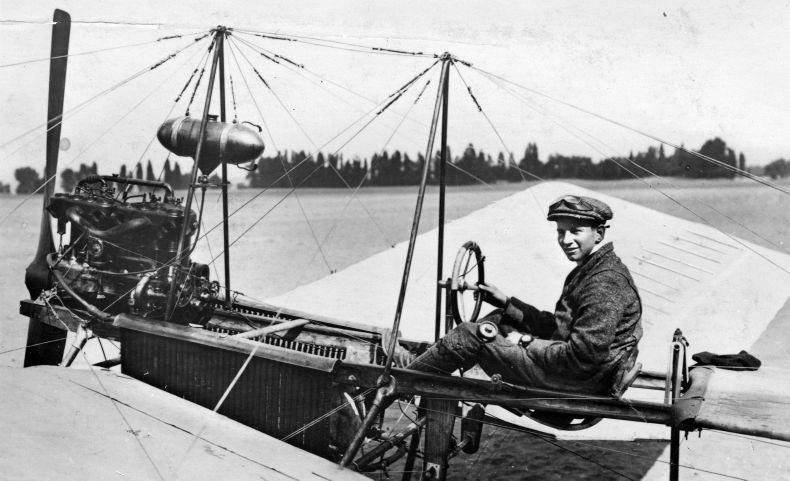
It had an extremely simple wing construction, consisting of “pocket plating” - two layers of canvas quilted with paired seams along and across, Steel pipes — spars — were pushed along the wing, and across-straight slats, along the wing. The front spar was the tip of the wing, the rear edge was twine. There was no profile for the wings. The layout of the aircraft is a pushing midrange with a large transverse V wing (9 °). Engine - “Argus” in 100 l. with. On the Spider II airplane, Fokker performed all the flights necessary to obtain a pilot certificate and began building a third model, on which he intended to make demonstration flights in his homeland, in Holland.
Delivered to Harlem, the Spider III made a stunning impression. Anthony made six flights on it lasting up to 11 minutes, including over the 80-meter bell tower. This aircraft took part in the competition of military airplanes 1912, where it took the fourth place. One of the acquaintances of Fokker Sr. said then: “Who would have thought that your son would soar so high!”
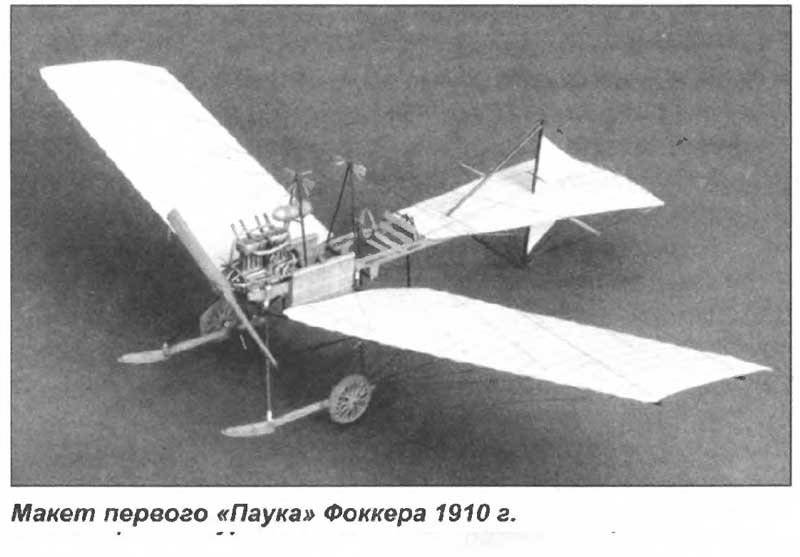
Many years later, Anthony said that the happiest moments of his life were these triumphant flights over his native Haarlem, who once spent him in Germany as a loafer and loafer, and met as a hero ...
A few months later, again in Germany, Fokker fell on such seven minutes that he later called them the most terrible in his life.
In December, 1911, Antoni decides that his passion should be transferred to the rails of business. In the suburbs of Berlin, a hangar was acquired, in which the aircraft manufacturing company Fokker Airplanbau was founded. In order to gain a reputation, A. Fokker himself decided to demonstrate the merits of his “3 Spider” at the aviation week at the end of May 1912. And in flight at an altitude of 750 meters, the upper wing stretch suddenly sagged. This meant that one of the lower stretch marks broke, and the wing could fall off at any time. Decreasing speed, Fokker began to carefully decline. The wing fluttered. Anthony gave a sign to his passenger, Lieutenant Schlichting, to step on the wing in order to partially compensate for the lifting force with his own weight and to unload the structure. And the lieutenant inadvertently pushed the trim with his foot. The wing broke off at a height of ten to fifteen meters, the apparatus collapsed to the ground. Schlichting was killed on the spot, and Fokker was taken to hospital in an unconscious state. But the disaster did not discourage Anthony.
He continued to build "Spiders", designed a folding aircraft transported by car, developed a seaplane, visited St. Petersburg, where his "Spider" took fourth place in the competition of military airplanes. The well-known Russian aviatrix "L. A Galanchikova set a height record for women (2140 m) on the Spider, and Fokker himself set a height record for men (3050 meters). Then the Fokker flew over Germany from Berlin to Hamburg. About Fokker talked. He began to receive private orders for aircraft. In 1912-1013 Fokker managed to sell a half dozen "Spiders". In the autumn of 1913, a new venture, the Fokker Flug-Hohwer, appeared in the outskirts of Schwerin.
Nevertheless, the German military played a decisive role in its future fate. Back in 1909, the German Ministry of War for the first time released a small sum of money for the development of aviation - 36 thousands of marks. However, this did not mean that the Germans neglected the development of air weapons: just in Germany, then, the main attention was paid to the development of “zeppelin”. The dirigible orientation determined the characteristics of German aircraft engines: with high efficiency and service life, they were significantly heavier than the French ones. And this feature of them was manifested in the fact that by the winter of 1913 — 1914, Germany, having taken away all the records of flight range and duration from France, was unable to take away its speed record. However, until the spring of 1914, this was of little concern to military leaders.
It must be remembered that Fokker was not only a designer, but also a pilot. The dizzying aerobatic maneuvers that were then demonstrated by the French virtuoso Pegu made an indelible impression on Fokker. Being a skilled pilot himself, Fokker set out to surpass Pegu, but this required a plane with completely different articles than the Spiders. In the 1913 year, Fokker buys the Moran monoplane in a poor condition for a song. It was this step that served the further development of the Fokker scheme, since the designer changes the wooden fuselage set on it to welded steel pipes. This was the first manifestation of the designer's style. However, Anthony never disdained improving existing designs. Therefore, it was difficult enough to accuse him of plagiarism. The car was easy, sporty. On it, Fokker began to master Pegu's dizzying stunts and with particular trepidation — the famous “dead loop” of the Russian pilot P. N. Nesterov.
By the spring of 1914, partly under the impression of the Fokker cascade of airborne figures, the concept of a “cavalry monoplane”, a light, high-speed, maneuverable reconnaissance aircraft, matured in the minds of German strategists. Fokker received an order for a single monoplane with a motor in 80 — 100 l. with. A few months after the outbreak of World War I, the military demanded that a machine gun be installed on this airplane.
Surprisingly, but a fact: the war of the warring powers entered the world war without weapons, because the then military experts considered the main task of aviation is the reconnaissance and correction of artillery firing. And they had to arm the planes during the fighting. The British installed a machine gun in the bow of the "Vickers" - a lumbering slow-moving machine with a pusher propeller. The French mounted light machine guns high above the wing so that the bullets would fly over the propeller disk. Both of these decisions turned out to be unacceptable for the Germans: they did not have airplanes with pushing screws, and there was not enough light machine guns. But heavy machine guns could not be mounted high above the wing. Need a device that allows you to shoot through a rotating screw.
A serious attempt to solve this problem was made by the Frenchman Rolland Garros. In November 1914, a well-known French test pilot of the Moran-Solignier company, Lieutenant Garrot proposed the idea of creating a single fighter armed with one machine gun fixed parallel to the flight line and shooting through a circle swept by a propeller. In order for the bullets, getting into the screw, not to pierce or damage it, Garro suggested the so-called bullet cutter. The cutter was a triangular, steel prism worn on the propeller blades in the place where they intersect with the extended axis of the bore of a fixedly mounted machine gun. The bullets, falling into the edge or in the face of a prism, ricocheted and did not damage the screw. Ricocheting over 15% of bullets for all shots. In February 1915, Garro’s proposal was implemented, the first shutoffs were installed on the French two-seater Moran-Saulne. 26 February 1915, on an airplane with Garro’s cutoffs, fought four enemy bombers. Having spent five clips, he forced the enemy crews to stop flying to the target and turn back. Over the 18 days he shot down the 5 of Germanic airplanes. Flying to the enemy ranks, Garro opened fire at close range.
We can safely say that the invention of Rolland Garros opened the way to the creation of a real fighter aircraft, since now the pilot could focus on solving a narrower range of tasks, the main one of which was to take a favorable position for shooting. A new weapon brought to life a new battle tactic: the attacking aircraft approached the target along the line of fire. This tactic has been preserved to this day. Naturally, in Germany they were very interested in new weapons, and quickly acquired them. Garro’s 19 in April during a free search due to a breakdown stalled the engine, and he planned for the territory occupied by the Germans. The Germans copied the novelty, but the results were deplorable. Unlike copper-coated French bullets, German bullets in chrome shells carried the screws.
Fokker was urgently called from Schwerin to Berlin ...
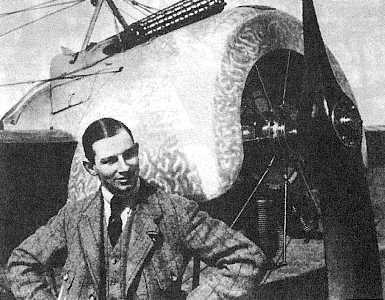 Prior to that, Anthony never held a machine gun in his hands, he had a very vague idea of his work. Nevertheless, he undertook to carry out the assignment and, having received a standard army machine gun for experiments, he left for Schwerin. Three days later he reappeared in Berlin. An airplane with a machine gun that could shoot through the propeller was attached to his car. For 48 hours, without sleep and rest, Fokker connected the locking mechanism of the machine gun with the motor shaft with the help of a cam unit so that shots were fired only when the propeller blade was not in front of the machine gun barrel. Tests of the synchronizer were successful, Fokker received the first order for 30 kits. In May, the first German fighter, the Fokker EI, appeared on the front of the 1915 of the year. He was like two drops of water like the "Moran", differing from it only in the design of the farm chassis and the metal frame of the fuselage. (And this time it would not be entirely correct to talk about plagiarism: Fokker formally bought a license from Moran-Saulier and began producing aircraft of this system before the start of World War I.) The main thing that made the Fokker a true fighter was a machine gun , first equipped with a synchronizer for shooting through the screw.
Prior to that, Anthony never held a machine gun in his hands, he had a very vague idea of his work. Nevertheless, he undertook to carry out the assignment and, having received a standard army machine gun for experiments, he left for Schwerin. Three days later he reappeared in Berlin. An airplane with a machine gun that could shoot through the propeller was attached to his car. For 48 hours, without sleep and rest, Fokker connected the locking mechanism of the machine gun with the motor shaft with the help of a cam unit so that shots were fired only when the propeller blade was not in front of the machine gun barrel. Tests of the synchronizer were successful, Fokker received the first order for 30 kits. In May, the first German fighter, the Fokker EI, appeared on the front of the 1915 of the year. He was like two drops of water like the "Moran", differing from it only in the design of the farm chassis and the metal frame of the fuselage. (And this time it would not be entirely correct to talk about plagiarism: Fokker formally bought a license from Moran-Saulier and began producing aircraft of this system before the start of World War I.) The main thing that made the Fokker a true fighter was a machine gun , first equipped with a synchronizer for shooting through the screw.The advantage of this solution is obvious: in the French plane, the linings reduced the efficiency of the propeller, and the bullets, hitting the blade, created significant engine loads. In addition, the synchronizer allowed to install two, three and even four barrels located directly near the pilot. All this eliminated the inconvenience of reloading, increased shooting accuracy due to the rigid attachment of weapons and allowed more convenient to put the scope. On account of the German fighters, not without reason called the "Fokker scourge", there were a lot of downed British and French aircraft (mostly sluggish "scouts"). The German army immediately gained an advantage. Fighter, and after it, attack aircraft, owe their appearance to solving the problem of the invention of the synchronizer.
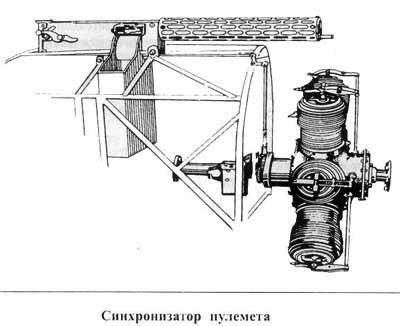 Fighters with a synchronized machine gun put fear on the British and French. True, at first German pilots were limited to reconnaissance flights and defensive battles. But in August, 1915, the lieutenants Immelman and Belke scored several victories, and this started the high combat reputation of the Fokker fighters. N. Billing, an English aviation and political figure, speaking in parliament, said that sending British pilots into battle with the Fokkers was a premeditated murder.
Fighters with a synchronized machine gun put fear on the British and French. True, at first German pilots were limited to reconnaissance flights and defensive battles. But in August, 1915, the lieutenants Immelman and Belke scored several victories, and this started the high combat reputation of the Fokker fighters. N. Billing, an English aviation and political figure, speaking in parliament, said that sending British pilots into battle with the Fokkers was a premeditated murder.The Allies frantically designed new cars that could compete with German ones. Meanwhile, Fokker was embroiled in patent litigation. In 1913, designer F. Schneider received a patent for a synchronizer. This patent appeared on the court as the main document testifying to the violation of Schneider’s patent rights by Fokker. Having carefully studied the case, Anthony tried to prove to the court that his synchronizer is significantly different from Schneider, and above all in the fact that his design is workable, in Schneider - not. Indeed, Schneider proceeded from the fact that the machine gun must be blocked every time the propeller blade passes in front of the barrel. But with a two-bladed propeller and 1200 rpm, the barrel is overlapped by the 40 blade once a second, and the firing rate of the machine gun itself is just 10 shots per second. It turned out that the locking mechanism had to be controlled by a blocker that worked four times faster than the machine gun itself, which was practically impossible. Fokker approached the matter differently. He understood: the only thing required is to stop the shot only when a bullet can hit the blade. If a machine gun makes 10 shots per second, it’s pointless to interrupt his 40 shooting times in that time. To establish the practical blocking frequency, Fokker screwed a plywood disk to the propeller of the aircraft with a machine gun and, turning it with his hand, received a series of bullet holes. On this disk, he easily adjusted the synchronizer: as soon as the holes on the disk went close to the blade, the locking mechanism had to interrupt the shot. This purely practical engineering approach allowed Fokker to create a workable design.
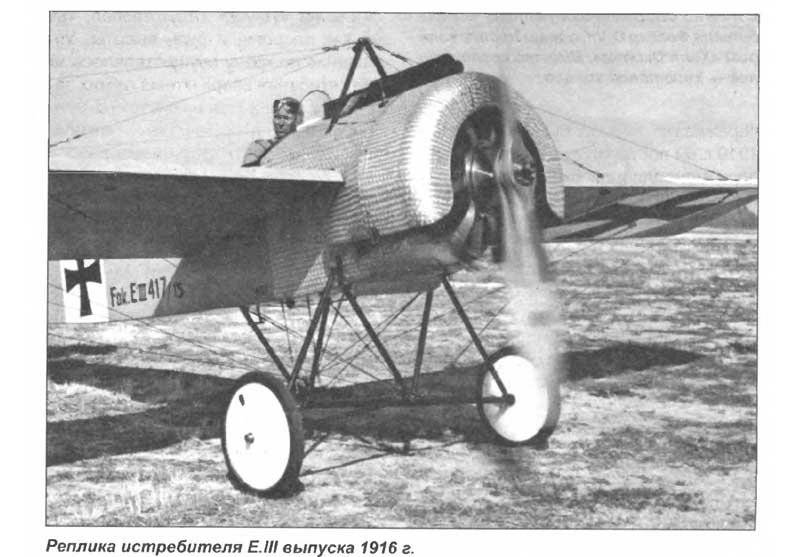
However, the court did not take into account this consideration and decided that Fokker would pay Schneider for each synchronized machine gun. Anthony saw in this decision the hostility with which he, a subject of Holland, constantly encountered in Germany. And it is not surprising that he himself never considered Germany his homeland. Once he told about the case when testing the first aircraft with synchronized machine guns. In one of these flights, Fokker caught up and caught a French reconnaissance aircraft in the crosshair. But the fire did not open. "Let the Germans themselves shoot at their opponents," - decided to Anthony and let the French leave.
To be continued ...
Использованная литература:
Pinchuk S. The Fokker Dr.I Dreidecker Fighter.
Kondratyev V. Fighters of the First World War.
Kondratyev V. The Fokker Fighter.
Kondratiev, V., Kolesnikov V. The Fighter Fokker D.VII.
Smirnov G. The Flying Dutchman // Inventor-rationalizer.
Smyslov, O.S. Aces vs aces.
Information